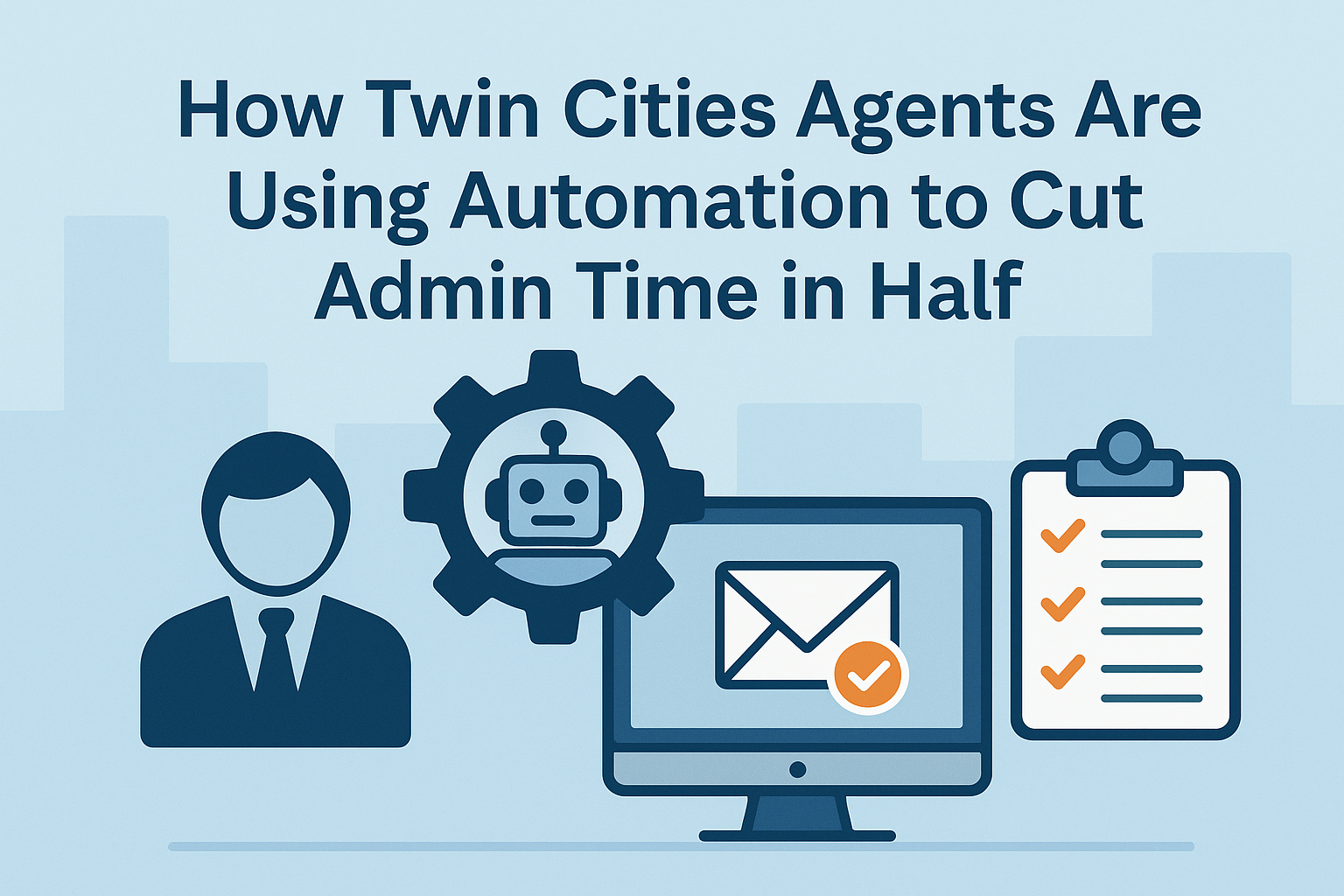How Twin Cities Agents Are Using Automation to Cut Admin Time in Half
If you ask most Twin Cities real estate agents what takes up the bulk of their time outside of showings and client meetings, the answer is almost always the same: paperwork and admin tasks.
From scheduling showings to updating the MLS to sending follow-up emails, these repetitive but necessary jobs can eat up hours every week. That’s why more agents in Minneapolis–Saint Paul are turning to automation — and in many cases, cutting their admin time in half.
The Problem: Too Many Tasks, Not Enough Time
The Twin Cities market is competitive. Between keeping up with leads, preparing listing materials, and staying on top of contracts, there’s little room left for the high-value work that actually grows your business — like building relationships and negotiating deals.
Without a system, agents often find themselves working late into the night just to keep up. Automation changes that equation.
The Solution: Automation That Works Behind the Scenes
Here’s how Twin Cities agents are reclaiming hours each week without sacrificing quality or client experience:
1. Automated Scheduling & Calendar Sync
Tools like Calendly, Acuity, or ShowingTime automatically coordinate showings and consultations. Instead of the endless “Does Tuesday at 4 work for you?” back-and-forth, clients pick an available time from your live calendar — and it’s instantly synced to your phone.
Local example: One Minneapolis agent reported saving nearly 4 hours a week just by automating showing requests for Uptown condos and Northeast properties.
2. Template-Driven Email Sequences
With a good CRM (Follow Up Boss, LionDesk, or even HubSpot), you can create personalized email workflows for common scenarios: new buyer leads, post-showing follow-ups, listing updates, and transaction milestones.
The key is to make each message sound personal by referencing neighborhood specifics, seasonal market trends, or prior conversations.
Example:
“Hi Sarah, just wanted to let you know a new listing popped up in St. Louis Park that matches your search criteria. Here’s the link — it might be worth a look before the weekend rush.”
3. Document Management & E-Signatures
Platforms like Dotloop, DocuSign, and SkySlope automate the contract process — sending, tracking, and storing documents securely. Instead of chasing signatures or manually filing paperwork, you set it up once and let the system handle the rest.
Local bonus: Many Twin Cities agents integrate their e-signature platforms directly with MLS and brokerage back-end systems, eliminating duplicate data entry.
4. MLS Auto-Updates for Clients
Rather than manually pulling comps or new listings, agents are using MLS auto-drip features to send clients curated updates. When a property in Edina drops in price or a new build in Maple Grove hits the market, the client hears about it immediately — without you lifting a finger.
FAQ: Automation for Twin Cities Real Estate Agents
Will automation make me seem less personal with clients?
Not if you customize your templates and add local context. Automation handles the delivery, but the message still comes from you.
What’s the easiest automation to start with?
Automated scheduling and email follow-ups give the quickest time savings for most Twin Cities agents.
Can automation work for small teams or solo agents?
Absolutely — many automation tools are built for solo use and scale as your business grows.
The Bottom Line
Twin Cities real estate agents who embrace automation aren’t just working faster — they’re working smarter. By offloading repetitive admin tasks, you can spend more time where it matters most: building relationships, winning listings, and closing deals.
The agents who adapt now will have a serious advantage as the market continues to evolve. And in Minneapolis–Saint Paul’s competitive climate, every extra hour counts.

